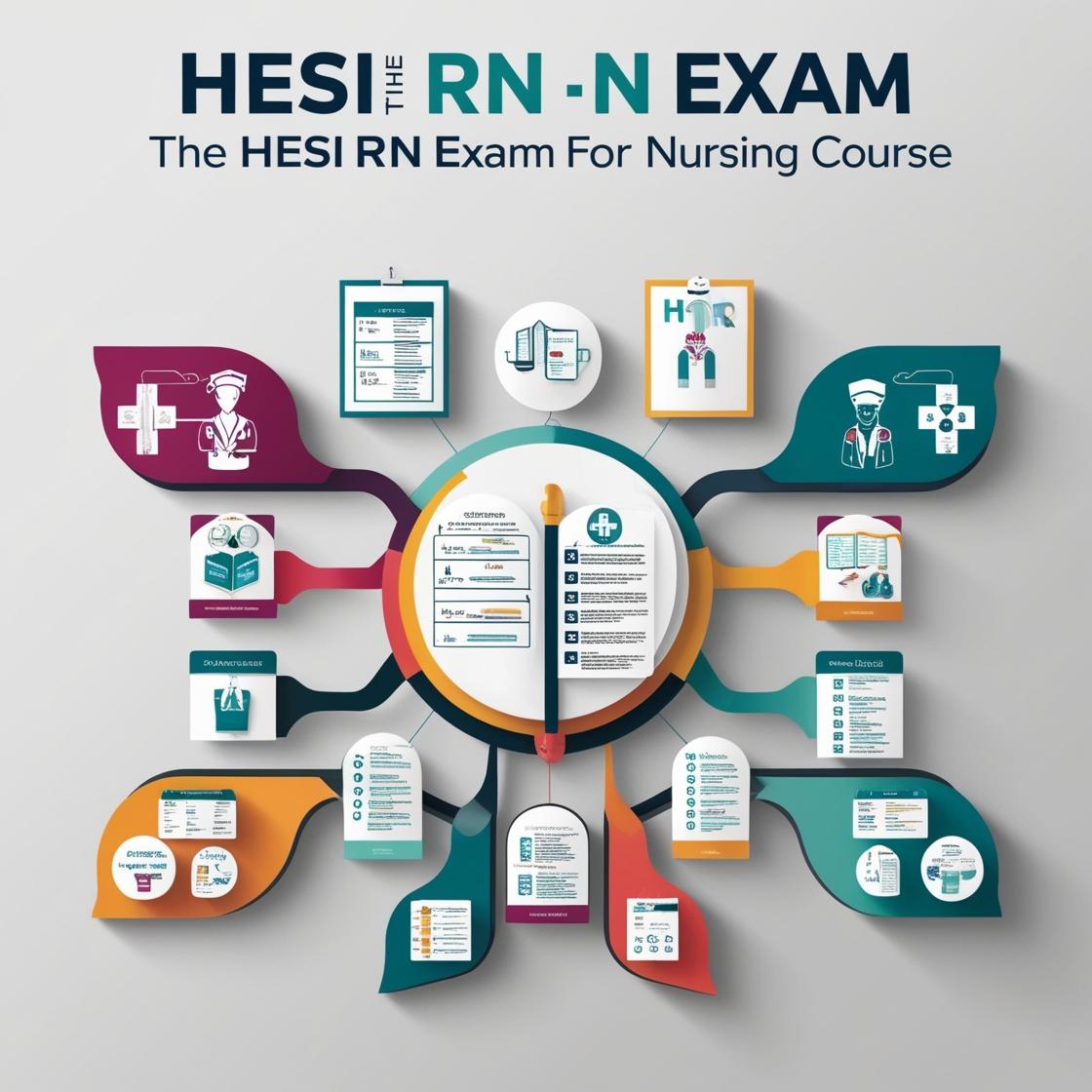HESI RN
HESI RN Exit Exam
1. A client with a history of chronic obstructive pulmonary disease (COPD) is admitted with an exacerbation. Which assessment finding requires immediate intervention?
- A. Barrel-shaped chest
- B. Use of accessory muscles
- C. Oxygen saturation of 85%
- D. Inspiratory crackles
Correct answer: C
Rationale: An oxygen saturation of 85% is significantly low for a client with COPD and requires immediate intervention to prevent hypoxemia. Oxygen saturation below 90% indicates poor oxygenation and poses a risk of tissue hypoxia, making it a critical finding that needs prompt attention. Barrel-shaped chest and inspiratory crackles are commonly seen in clients with COPD and do not necessitate immediate intervention. The use of accessory muscles may indicate increased work of breathing but does not pose the same level of immediate threat as severe hypoxemia.
2. While a child is hospitalized with acute glomerulonephritis, the parents ask why blood pressure readings are taken so often. Which response by the nurse is most accurate?
- A. Elevated blood pressure must be anticipated and identified quickly
- B. Frequent monitoring helps ensure the medication is effective
- C. It is standard protocol for all hospitalized children
- D. We need to monitor for any potential kidney damage
Correct answer: A
Rationale: The correct answer is A: 'Elevated blood pressure must be anticipated and identified quickly.' Acute glomerulonephritis can lead to significant hypertension, making it crucial to monitor blood pressure frequently to promptly identify any elevation. Choice B is incorrect because while monitoring can help assess medication effectiveness, the primary reason for frequent blood pressure checks in this case is to detect elevated blood pressure. Choice C is incorrect as not all hospitalized children require such frequent blood pressure monitoring. Choice D is incorrect as the primary reason for monitoring blood pressure is to detect hypertension, rather than solely focusing on potential kidney damage.
3. A female client receives a prescription for alendronate sodium (Fosamax) to treat her newly diagnosed osteoporosis. What instruction should the nurse include in the client's teaching plan?
- A. Take on an empty stomach with a full glass of water.
- B. Take with food to avoid stomach upset.
- C. Take before bedtime with a light snack.
- D. Take with milk to enhance absorption.
Correct answer: A
Rationale: The correct answer is to take alendronate on an empty stomach with a full glass of water. This instruction is essential to ensure proper absorption and prevent esophageal irritation. Taking alendronate with food, before bedtime with a light snack, or with milk can interfere with its absorption and effectiveness, leading to potential side effects or reduced therapeutic benefits.
4. The nurse is caring for a client with chronic kidney disease (CKD) who is receiving erythropoietin therapy. Which laboratory value should be closely monitored?
- A. Serum potassium level
- B. Hemoglobin level
- C. White blood cell count
- D. Serum calcium level
Correct answer: A
Rationale: The correct answer is A: Serum potassium level. When a client with chronic kidney disease is receiving erythropoietin therapy, monitoring serum potassium levels is crucial due to the risk of developing hyperkalemia. Erythropoietin can stimulate red blood cell production, leading to an increase in potassium levels. Monitoring potassium helps prevent complications associated with hyperkalemia, such as cardiac arrhythmias. Choices B, C, and D are incorrect because while hemoglobin levels are relevant in assessing the effectiveness of erythropoietin therapy, monitoring potassium levels is more critical in this scenario.
5. A client with a history of rheumatoid arthritis is prescribed methotrexate. Which laboratory value should the nurse monitor closely?
- A. Liver function tests
- B. Complete blood count
- C. Serum creatinine
- D. Prothrombin time
Correct answer: C
Rationale: Serum creatinine should be closely monitored in a client receiving methotrexate, as the medication can cause nephrotoxicity. Monitoring serum creatinine levels helps assess kidney function and detect potential nephrotoxic effects of methotrexate. Liver function tests (Choice A) are important to monitor for hepatotoxicity caused by methotrexate. While methotrexate can cause bone marrow suppression, leading to anemia, leukopenia, and thrombocytopenia, monitoring a complete blood count (Choice B) is essential but not the priority in this case. Prothrombin time (Choice D) is not typically affected by methotrexate therapy and is not the primary laboratory value to monitor in this situation.
Similar Questions

Access More Features
HESI RN Basic
$89/ 30 days
- 50,000 Questions with answers
- All HESI courses Coverage
- 30 days access @ $89
HESI RN Premium
$149.99/ 90 days
- 50,000 Questions with answers
- All HESI courses Coverage
- 30 days access @ $149.99
